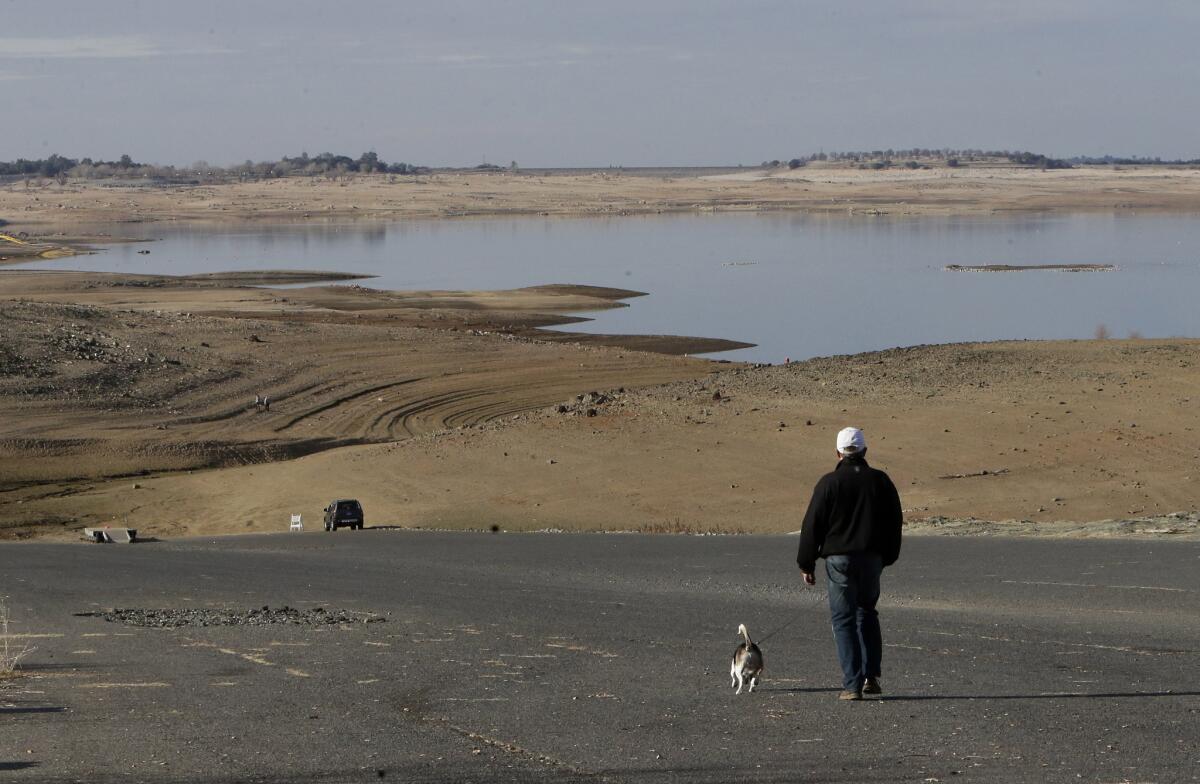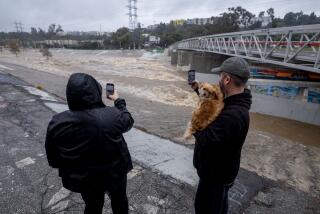A drier California than ever? Pretty much.

The last 12 months have been the driest on record in California, and this, on the heels of two below-normal years, prompted Gov. Jerry Brown to declare that the state is in a drought emergency. Ours is a state that relies heavily on the winter storms that bring us the vast majority of our water supply, and those storms have been blocked and diverted so we have received virtually no significant water in more than a year.
The 2014 water year, which began Oct. 1, is on track to be even drier than the devastating drought of 1976-77. That year, precipitation was only 15% of average, reservoirs dropped to one-third their normal levels and 7.5 million trees in the Sierra Nevada weakened by drought succumbed to insect-related diseases, fueling massive wildfires.
How extreme is this year in California’s climate history? To answer this, we need to look back further than the 119 years we have on record, to the geologic past. Based on the growth rings of trees cored throughout the Western United States, AD 1580 stands out as the driest year in the last half a millennium, drier than 1976-77. It was so devastatingly dry in 1580 that the giant sequoias in the Sierra Nevada essentially failed to grow at all; the cores show either extremely thin or absent tree rings. If the current drought continues in California through Oct. 1, this water year will be the driest not only in our modern records but in half a millennium.
Although one extremely dry year is a major hardship for a state with 38 million people and a $44.7-billion-a-year agricultural industry, this year is also coming on the heels of a decade of relatively dry years. Since 2007, we have had six below-normal years, this year being by far the lowest. It is a reasonable question to wonder whether our state is in the midst of a prolonged drought.
Tree rings, lake and ocean sediments, and other earth materials provide natural archives that reveal our region’s climate history. And the history of the Western United States is one apparently plagued with deep and prolonged droughts on a fairly regular basis. Multi-year droughts have recurred every 20 to 70 years over the last several thousand years, related to changes in ocean temperature in the North Pacific.
How long can these multi-year droughts last? In the modern historic record, they lasted only six years: from 1928 to 1934 and from 1987 to 1992. But the climate archives going further back reveal that droughts often lasted much longer than a decade, causing large lakes to shrink or dry up completely, more frequent wildfires and native populations to embark on massive migrations. A particularly dry stretch occurred between AD 900 and 1400 (during the Medieval Warm Period), with two 100-year droughts in California and the Southwest. Throughout the Southwest, archaeological remains show that flourishing civilizations all but disappeared as their agricultural bases withered.
What does all this have to do with our current drought? In the context of the longer-term climate history, the 20th century stands out as one of the wettest over the last 1,300 years, yet the droughts of the mid-1920s, 1977 and the late 1980s caused immense hardship for society, based as it is on heavy water usage. California’s rapidly growing population and enormous agricultural industry rely on irrigation and groundwater.
But the wetter climate needed to sustain this population is not likely to continue into the future. If the patterns of the last several thousand years are a guide, we can expect more and longer droughts than what we have seen in the last 119 years. And according to climate predictions, we can expect warmer temperatures and higher evaporation rates, putting more stress on sensitive ecosystems.
The climate clock is ticking, and it is time for policymakers in the West to prepare for a warmer and drier future facing the region.
B. Lynn Ingram is a professor of earth and planetary science at UC Berkeley; Frances Malamud-Roam is a senior environmental planner and biologist at Caltrans. They are coauthors of “The West Without Water: What Past Floods, Droughts, and Other Climatic Clues Tell Us About Tomorrow.”
More to Read
Start your day right
Sign up for Essential California for news, features and recommendations from the L.A. Times and beyond in your inbox six days a week.
You may occasionally receive promotional content from the Los Angeles Times.






